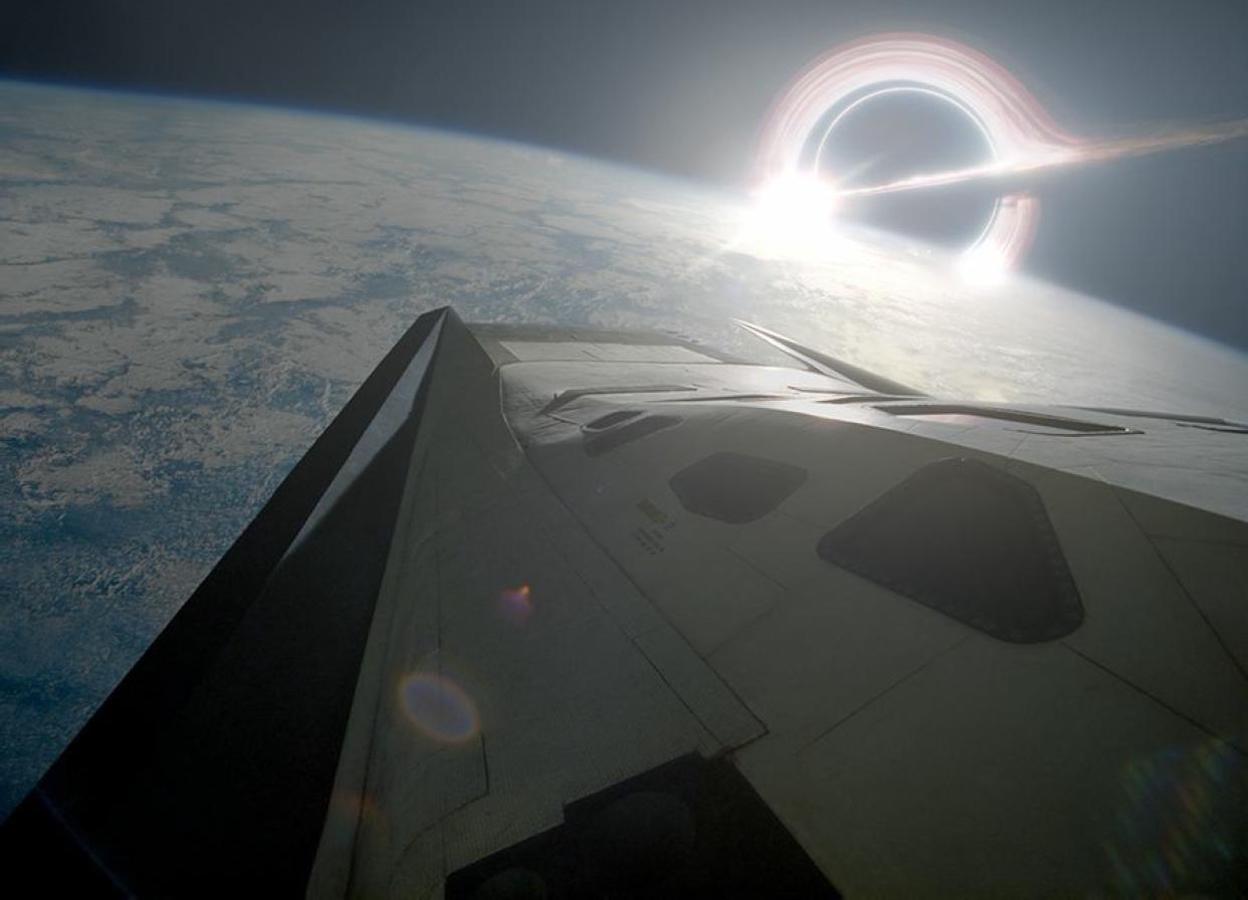- Director Christopher Nolan’s Hollywood blockbuster “Interstellar” just celebrated its fifth anniversary.
- In the movie, Matthew McConaughey plays an astronaut who journeys into a supermassive black hole called Gargauntua.
- To make “Interstellar” scientifically accurate, Nolan hired physicist Kip Thorne to render the most realistic depiction of a black hole possible.
- But since the movie was released, scientists have learned more about what black holes really look like, and even imaged one for the first time.
- These discoveries revealed that, despite Nolan and Thorne’s best efforts, Gargantua wasn’t perfectly accurate.
- Visit Business Insider’s homepage for more stories.
At the heart of every galaxy lies a supermassive black hole, where gravity is so strong that nothing – not even light – can escape its boundary.
In the movie “Interstellar,” a fictional black hole called Gargantua takes center stage. The film came out exactly five years ago, in November 2014. In it, Matthew McConaughey and Anne Hathaway play astronauts who travel through a wormhole – a tunnel that allows for nearly instantaneous travel between far-distant points – to explore three planets that orbit Gargantua, 10 billion light-years from Earth.
In the end, McConaughey’s character navigates his ship into the supermassive black hole, inside which he discovers a fifth dimension, inter-dimensional omniscient beings, and the ability to communicate with his estranged daughter across time and space.
Director Christopher Nolan and his visual effects team strove for superior scientific accuracy in “Interstellar” – they even hired theoretical physicist and Nobel laureate Kip Thorne as a consultant.
"Neither wormholes nor black holes have been depicted in any Hollywood movie in the way that they actually would appear," Thorne said in an interview prior to the movie's release. "This is the first time the depiction began with Einstein's general relativity equations."
Indeed, the movie's depiction of Gargantua was lauded as the most accurate film portrayal of a black hole ever.
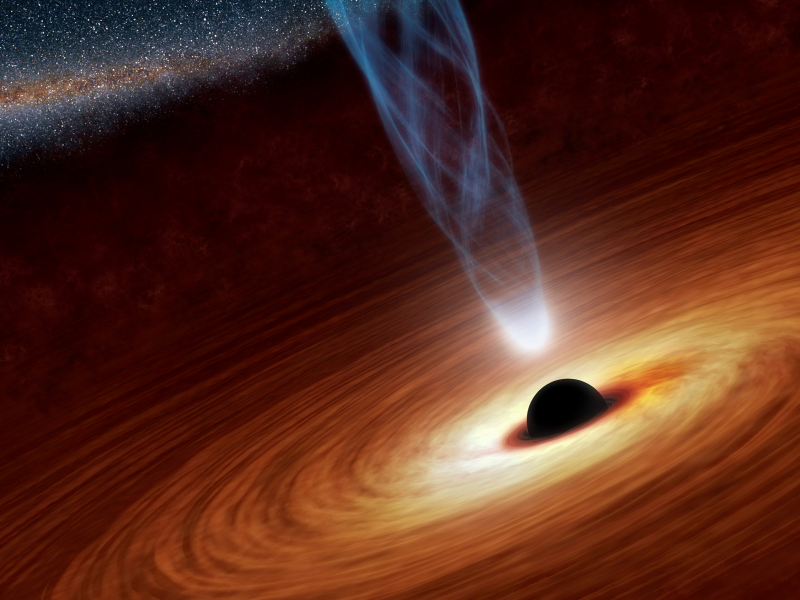
But in the last five years, a handful of major discoveries about black holes have given physicists new insights about what these massive objects look like and how they behave. Based on that information, Gargantua wasn't completely accurate, though it still comes close in many respects. Here's what "Interstellar" got right and wrong.
The first image of a black hole ever captured
Supermassive black holes form when stars collapse in on themselves at the end of their life cycles. On average, they're millions of times more massive than the sun.
Scientists struggled for decades to capture one on camera, because black holes are so massive and spin so quickly that they distort space-time, ensuring that nothing can break free from their gravitational pull. Because even light can't escape, these forces create a unique shadow in the form of a perfect circle at the black hole's center.
The outer border of that center is known as the black hole's event horizon, or "point of no return."
But in April, a group of scientists from the international Event Horizon Telescope (EHT) Collaboration released the first-ever photograph of a supermassive black hole to the public. Though the image was fuzzy, it showed that, as predicted, black holes look like dark spheres surrounded by a glowing ring of light.
"As a cloud of gas gets closer to the black hole, they speed up and heat up," Josephine Peters, an astrophysicist at the University of Oxford, previously told Business Insider. "It glows brighter the faster and hotter it gets. Eventually, the gas cloud gets close enough that the pull of the black hole stretches it into a thin arc."
The unprecedented photo shows the supermassive black hole at the center of the Messier 87 galaxy, which is about 54 million light-years away from Earth. The black hole's mass is equivalent to 6.5 billion suns.
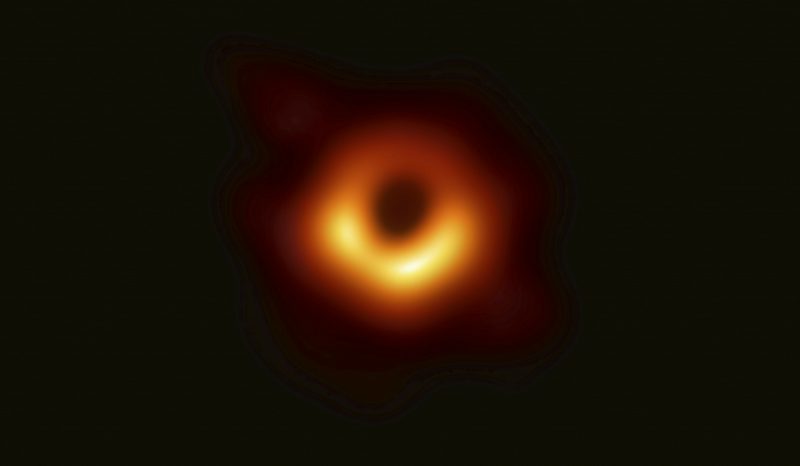
To capture the image, astronomers relied on years of data from eight telescopes synced up across the globe. So the image is a reconstructed view, not a photograph.
"It feels like looking at the gates of hell, at the end of space and time," Heino Falcke, an Event Horizon Telescope collaborator, said when the photo was published.
The EHT team's next target is likely Sagittarius A*, the black hole in the center of our own galaxy.
We simulated what it might look like to hang out near a black hole
Since the April EHT image was so blurry, NASA scientists created a visualization of what a black hole might look like close-up and in action.
The animation shows how gravity surrounding the black hole would twist light from the orbiting cloud of gas, dust, dead stars, and other space detritus (called the accretion disk). That would appear as a rainbow of fire bending around a dark abyss.
The black hole would change in appearance depending on how you looked at it. A side view, like the one below, would show the accretion disk slithering around the event horizon.
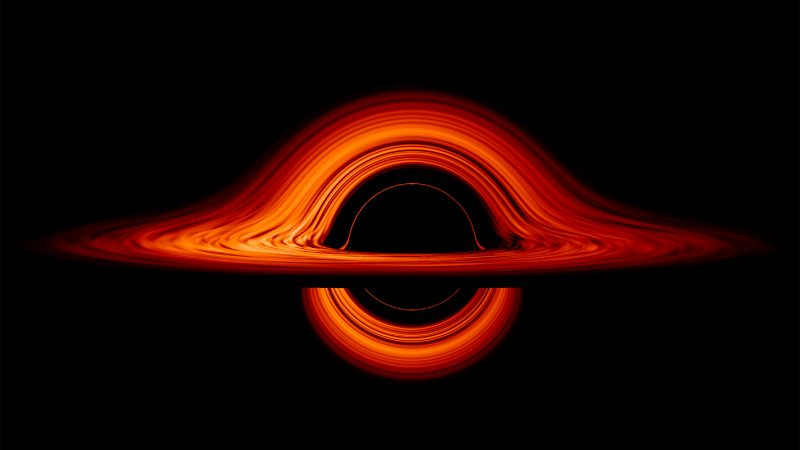
The disk would appear brighter on one side than the other because M87's black hole is likely spinning, which also spins the cloud of dust and gas orbiting it. So the material moving towards our eyes would seem brighter than the material moving away - a bit like the beacon of a lighthouse.
If you were to look at the black hole from above or below, however, the accretion disk would form a near-perfect circle and the light would appear more evenly distributed.
According to Thorne, the reason the black hole in "Interstellar" doesn't match the M87 black hole image is that Nolan elected to omit that brightening and dimming phenomenon.
Thorne told Gizmodo that "the human eye would likely not be able to discern the brightness differences on the two sides of the hole when the overall brightness is so extreme." That's why the film's black hole appears to have same brightness all the way around.
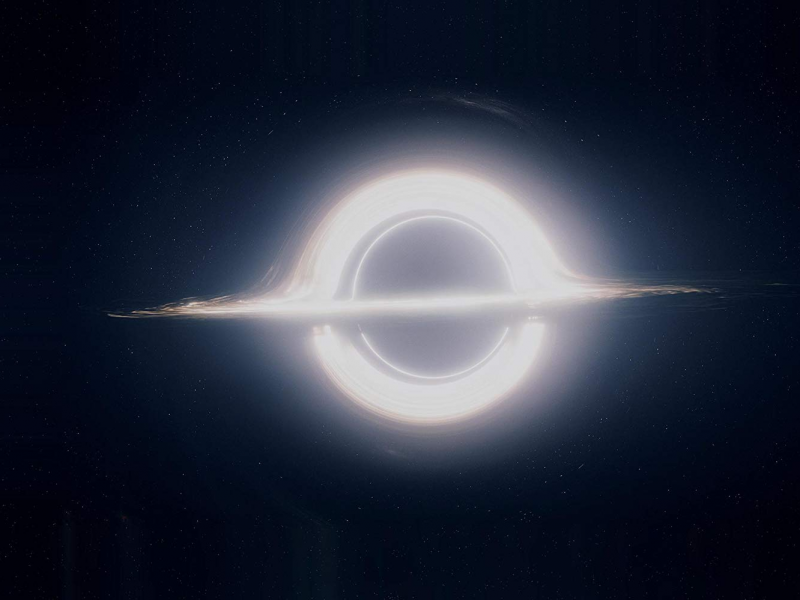
Scientists confirmed that there's a supermassive black hole at the center of our galaxy
Supermassive black holes are common in the universe - they've been found at the center of almost every galaxy scientists have examined. The black hole at the center of the Milky Way, Sagittarius A*, is 25,000 light-years away and 4 million times as heavy as our sun.
Sagittarius A*'s accretion disk is about 100 million miles wide, or a little wider than the distance between Earth and the sun.
In October 2018, astronomers revealed that they'd observed Sagittarius A* sucking in blobs of hot gas at 30% of the speed of light - 201 million mph. That triggered three powerful bursts of radiation that were detected by telescopes on Earth.
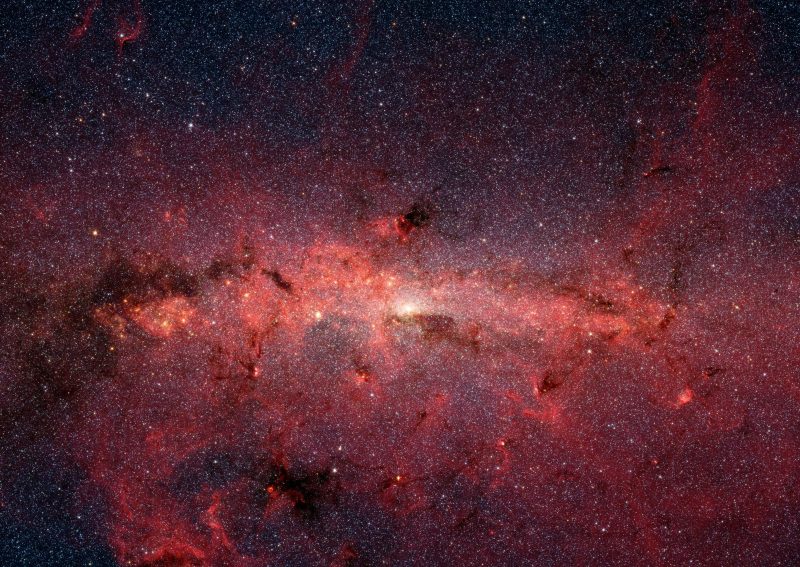
At the time, the study authors said the flares "provide long-awaited confirmation that the object in the center of our galaxy is, as has long been assumed, a supermassive black hole."
Josephine Peters, an astrophysicist at the University of Oxford who wasn't involved in the study, previously told Business Insider that the observations followed material "as close as you can get to a black hole without being consumed by it."
But Peters added that Sagittarius A* "is still incredibly mysterious."
The more scientists learn about black holes like Sagittarius A*, the better directors like Nolan can depict them in Hollywood blockbusters.

